When selecting a new muzzle device for your firearm, it’s easy to get overwhelmed by the variety of options there are. Knowing the different muzzle device types and what they are best used for can help narrow your search down quite a bit.
Muzzle brakes and compensators are designed to expel gasses from the barrel in a way that reduces recoil and muzzle movement. Muzzle brakes mostly reduce recoil, while compensators mostly reduce muzzle movement, and flash hiders reduce the flash produced from firing the weapon.
A lot of muzzle devices will be a combination type where they have properties of both muzzle breaks and compensators. In general though, a muzzle device can fit into one of the three categories.
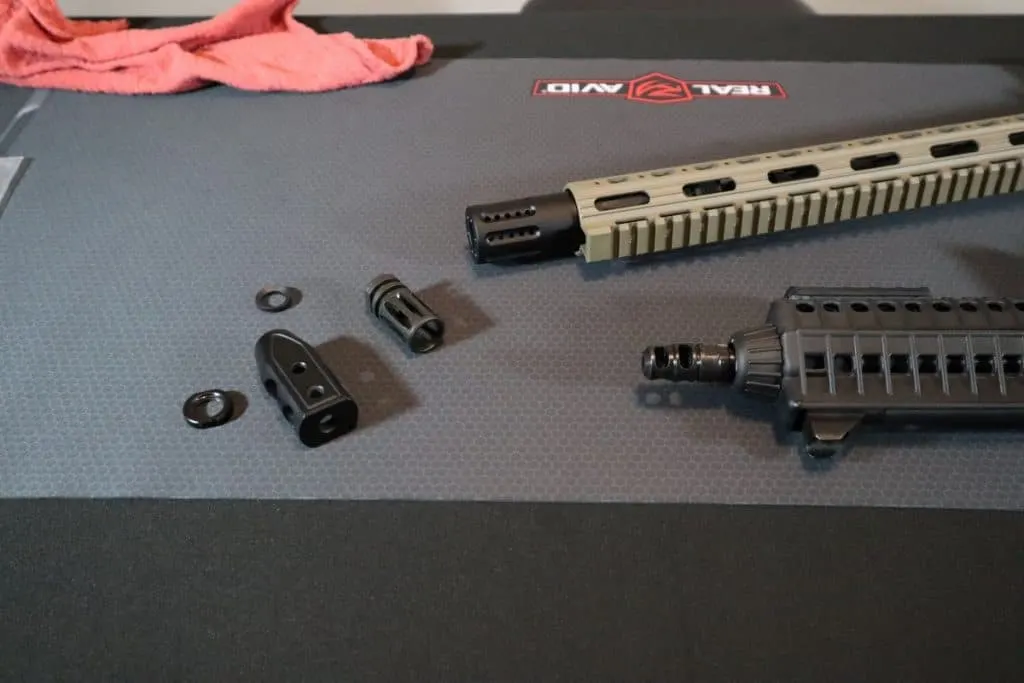
Muzzle Device Types And Uses
There are a handful of muzzle device types, each with their own purpose and reason to put on a firearm. Here’s a list of the most common muzzle device types with a dedicated section to each below.
The different muzzle device types are:
- Muzzle Brake
- Compensator
- Flash Hider
- Combination
- Suppressor
- Barrel Shroud
The most common muzzle devices are flash hiders, muzzle brakes, and compensators. Here’s a quick video I made to show the differences with more info below:
What Is A Flash Hider/Flash Suppressor
Flash hiders are designed to reduce the amount of flash seen from the end of the barrel when firing. This is the most common type of muzzle device because most AR type weapons come with one from the factory.
What Is Muzzle Flash:
The muzzle flash is not actually unburned powder leaving the barrel, instead it’s caused by the extremely hot gasses meeting with cooler air. The hot gasses expand rapidly, creating a bubble which is illuminated.
How A Flash Hider Works:
Flash hiders work by disrupting this bubble from being formed in the first place, by dissipating the gasses into different directions. That way, a large expanding gas bubble is never formed in the first place.
You’ll most likely see a ‘birdcage’ type flash hider on a standard AR and it’s the same flash hider used by the military on the M16 and M4. But that’s not the only type of flash hider available.
Flash Hider Types:
- Birdcage – A2 Flash Hider
- Pronged – 3 Prong Flash Hider
- Can Flash Hider
Birdcage type flash hiders are the most common, least expensive, and easiest to find flash hiders available.
I’ve gotten them here, Flash Hiders from OpticsPlanet for under 10 dollars on multiple occasions.
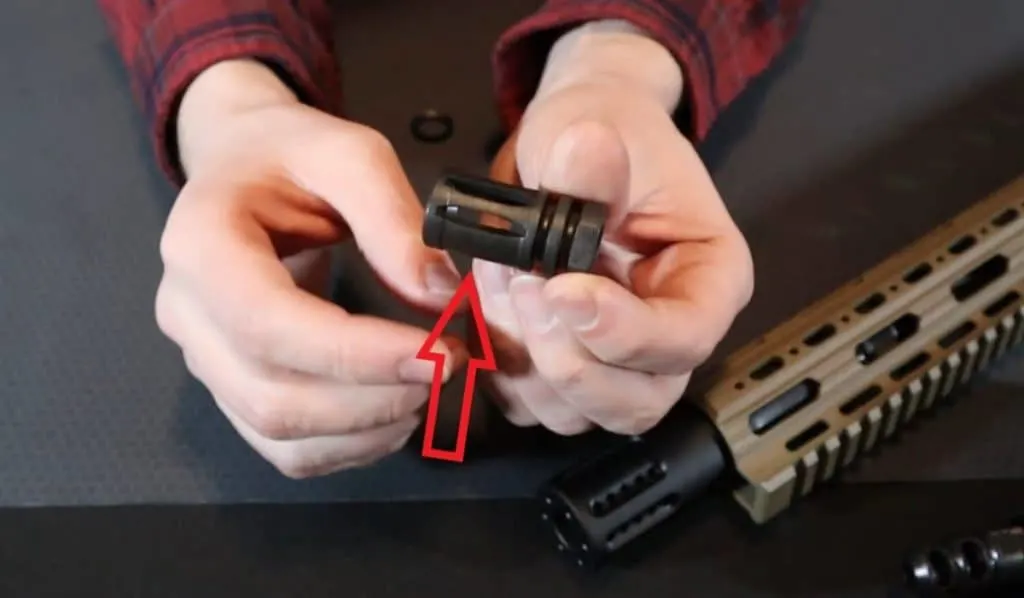
The birdcage flash hiders with a solid bottom, will have some properties of a compensator. By expelling the gasses upwards, you’ll notice reduced muzzle rise or muzzle flip and reduced dust signature when firing prone.
The pronged type flash hiders will typically have three prongs used to disrupt the gasses leaving the barrel and typically range from 20 dollars with nicer models going as high as 80 or 90 dollars.
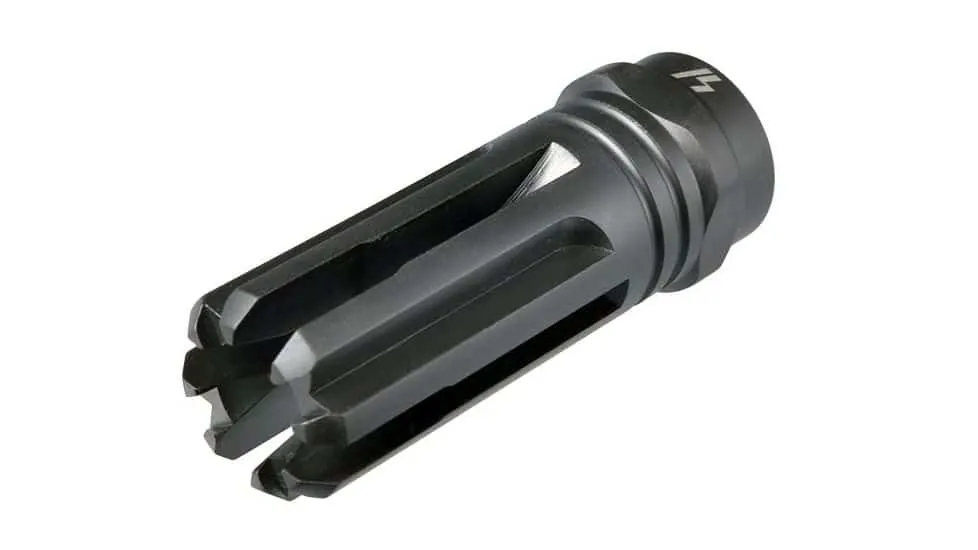
I’d recommend the Strike Industries Venom for a moderately priced, good quality, pronged type flash hider.
The can type flash hiders are generally the most expensive. You can find cheaper versions, but they may not work as well.
These are meant to direct all the blast downrange, away from you, while still eliminating muzzle flash. Many users will notice the gun doesn’t seem as loud with on of these on it.
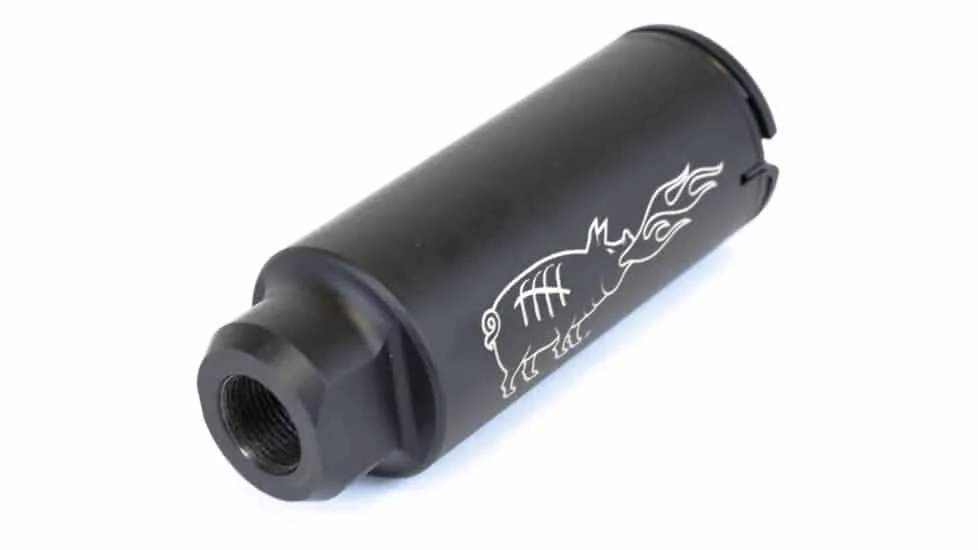
I recommend the Noveske Flash Suppressor if you’d like to reduce flash, and some noise on the firing line.
Flash Hider Advantages:
- Inexpensive
- Easy to get a hold of
- Some will slightly reduce muzzle rise
- Variety of options available
- Usually comes on standard model ARs
Flash Hider Disadvantages:
- Not as effective on shorter barrels
- No real muzzle movement reduction
- No real recoil reduction
What Is A Muzzle Brake
The term muzzle brake and compensator are almost interchangeable now. I say almost because there are differences unique to each. Just keep in mind that many shooters will call a comp a muzzle brake and vice versa.
The muzzle brake is connected to the end of barrel and will direct some of the expelled gasses to the sides, backwards, or upwards to reduce recoil and muzzle rise.
The gasses leaving the barrel in this way will pull the firearm forward, working against the natural backwards motion of the weapon, causing the shooter to feel less recoil.
Muzzle Break Port Location:
- Side Ports – Reduce recoil and sideways muzzle movement
- Upwards Ports – Reduce muzzle rise and recoil
- Angled Ports – Reduce recoil, muzzle rise, and muzzle movement
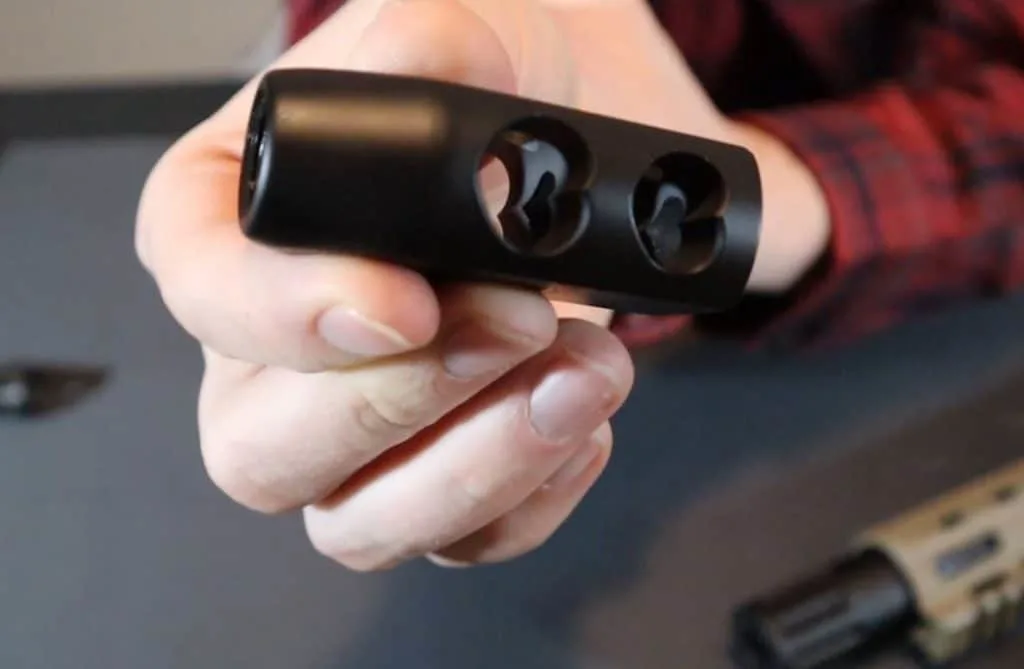
Most muzzle breaks will aid in reducing muzzle flip and muzzle movement, but in general, muzzle breaks are designed to reduce recoil. In fact, A muzzle break with side ports is solely focused on recoil reduction.
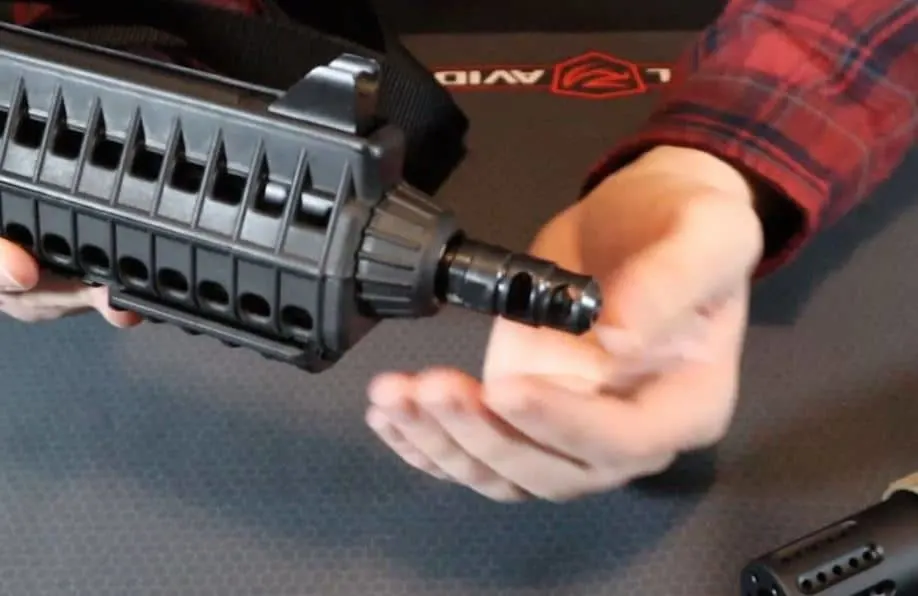
However, they do make muzzle breaks with angled or ports on the top of the device which can also reduce muzzle rise and movement on top of recoil. This is why the terms compensator and muzzle break are so often interchangeable.
I recommend Muzzle Brakes with side ports if your goal is to reduce recoil as much as possible. Like this Precision Armament Severe Duty Muzzle Brake with large side ports and smaller upwards ports for some reduced muzzle rise.
Muzzle Brake Advantages:
- Noticeable reduction in recoil
- Some help reduce muzzle rise slightly
- Some help reduce muzzle movement
- Makes firearm more fun to shoot
Muzzle Break Disadvantages:
- Very loud
- I mean very loud, no one wants to stand next to you
- Can be a bit expensive
What Is A Compensator
Where the main goal of a muzzle break is to reduce recoil with some added benefits of reducing muzzle rise and muzzle movement, a compensators goals are swapped.
Although a compensator works in the same ways as a muzzle device, reducing recoil is not its primary function. A compensator will be the best muzzle device type for reducing muzzle movement and muzzle rise, helping to keep you on target.
Of course, compensators will help to reduce recoil, but they’re mostly popular on AR15 type or other firearms where recoil isn’t a huge issue to begin with.
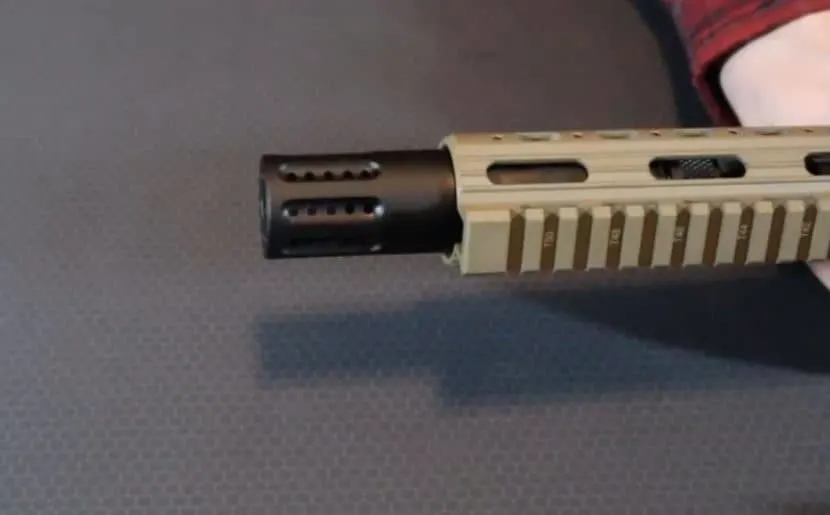
Some compensators will be designed similar to a muzzle break just with more upwards or angled facing ports, while others will have ports facing in all directions.
In that way, the expelling gasses keep your barrel where it is more effectively. Reducing muzzle flip or muzzle rise, as well as muzzle movement, to keep your follow up shots on target.
I recommend looking through some Decently Priced Compensators Here, keeping in mind the direction the ports are facing and what effect you intend to get out of your compensator.
Compensator Advantages:
- Noticeable muzzle movement reduction
- Muzzle rise reduction
- Slight reduction in recoil
- Variety of options available
- Stay on target more efficiently
Compensator Disadvantages:
- Some can be expensive
- Makes shooting louder on the firing line
Combination Type Muzzle Devices
We’ve already discussed how many muzzle devices are combination type, and you may even see them marketed as a hybrid brake/compensator/flash device.
It makes sense in many cases that a shooter would like some benefits of a compensator as well as the recoil reduction of a muzzle brake.
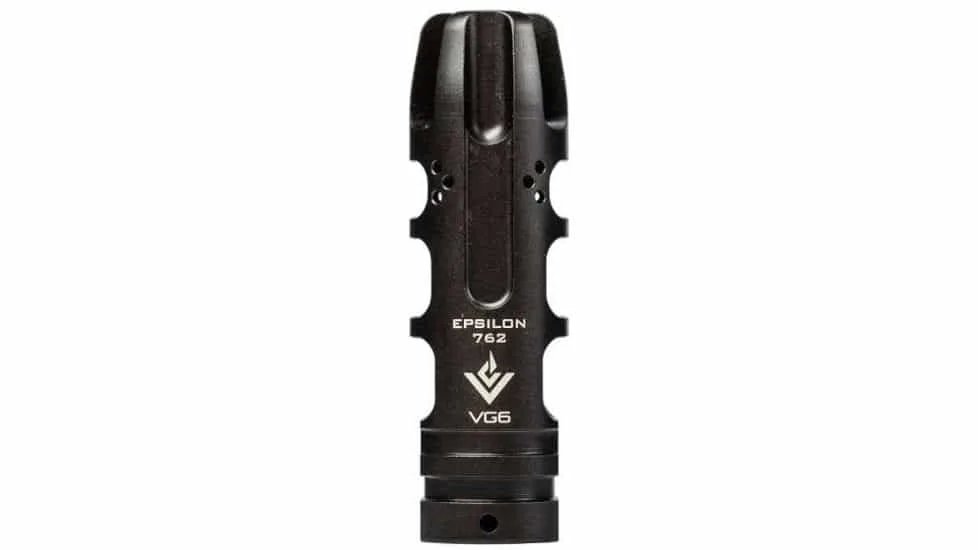
If you’re looking for a good all-in-one muzzle device that has some properties of recoil reduction, as well as muzzle movement control. I recommend the VG6 Precision Epsilon.
There are a handful of versions to work with different calibers, and all the reviews are 5 stars with that one.
What Is A Suppressor
A suppressor, sometimes referred to as a silencer, works by slowing down the speed of gasses leaving a firearms barrel when discharged. The reduction in speed and pressure of the expelling gasses greatly reduces recoil, muzzle movement, and sound of a firearm.
A suppressor can be considered the ultimate muzzle device in my opinion. It has all the characteristics you want out of a muzzle brake, compensator, and flash hider all in one, plus it makes the gun quieter and more fun to shoot.
Unfortunately, if you want a suppressor you have to pay a fee to the ATF, submit an application with finger prints, pass a thorough background check, and wait about a year.
I’m currently in the waiting about a year stage of this process myself.
What Is A Barrel Shroud
A barrel shroud is nothing more than a cosmetic addition to the end of a barrel. It looks like a suppressor, and that’s why many people buy them, but they offer no real advantages.
You could argue that they add weight to the end of the barrel, which can help muzzle rise. But after shooting thousands of rounds with one, I’ve not seen a noticeable difference.
They do make shroud/compensator combination muzzle devices however, that do work to reduce muzzle movement with the compensator portion of the device. While the shroud portion just extends down the barrel like a covering.
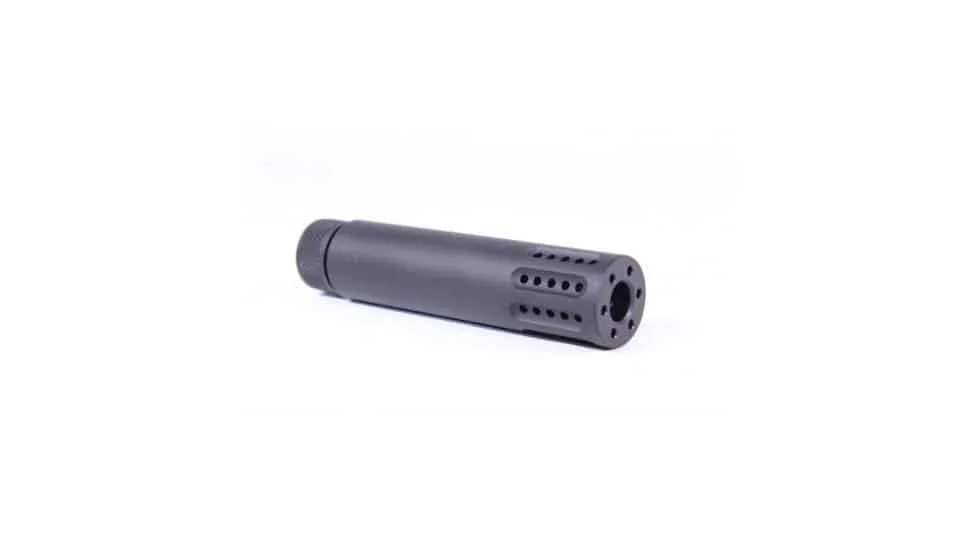
The Guntec Slip Over Shroud Multi-Port is a good example of a shroud compensator combo muzzle device.
This is a popular option for rifles that want a compensator, but also have a hand guard that extends to just before the barrel threads start.
Here’s a quick video I made showing these combo type barrel shroud devices:
The part of the barrel where the hand guard ends and the barrel threads start may have a little gap, and the rifle can look a little odd because of it. To solve that just get a shroud compensator combo device.
There are multiple install methods used to attach these different types of muzzle devices. Check out my step by step instruction on How To Install A Muzzle Device for more info.
